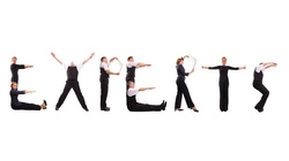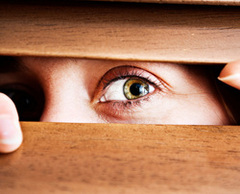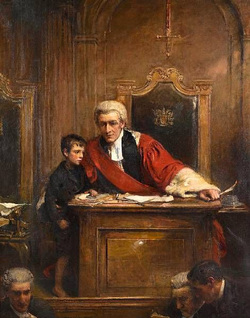 A trial involves the calling of witnesses to adduce evidence. Witnesses can be divided into two categories, which are witnesses of fact and witnesses of opinion. Witnesses of fact are directly related to the case (i.e. eye witnesses), meanwhile witnesses of opinion are usually experts, who are called to assist the court in forming an independent opinion or finding. The use of expert witnesses to assist the court is not a new phenomenon but it is gaining popularity in Malaysia and also in other jurisdictions due to the rise of new and more sophisticated crimes.
In simple language, if we look at the phrase “Expert Opinion” and analyse it, it means that an opinion which is given by a person who is expert in a particular field, may it be science, art, law or any other technical field. This concept is envisaged by Section 45(1) of the Evidence Act 1950 which provides that “When the court has to form an opinion upon a point of foreign law or of science or art, or as to identity or genuineness of handwriting or finger impressions, the opinions upon that point of persons specially skilled in that matter are relevant facts”. Subsection (2) goes on to say that “such persons are called experts”. The function of this section was further explained under the illustrations. “Expert” means one who is skilled in any particular art or trade, profession being professed of particular knowledge, concerning the same. If a person has acquired any special experience or special training in particular subject to which the Court enquiry relates, such a person can be considered as an expert. An expert is the one who has made the subject upon which he speaks, a matter of particular study, practice or observation and he must have a special knowledge of the subject. Any person who has the experience to give an informed opinion on a matter outside the experience of Court is an expert. An “Opinion” is estimation, a belief or assessment, a view held as probable, what one thinks about a particular question or topic, an assessment short of grounds of proofs, a formal statement of reasons for the judgment or a formal statement of professional advice. Expert Opinion assists the Court in the matter of scientific nature. An expert gives opinion for the matter after assessing it and this opinion is not binding in nature, it is merely advisory. The issue before the court is whether the nature of the evidence requires special skill as was decided by the court in Junaidi bin Abdullah v. PP. The expert only gives an opinion, but not a conclusion of the matter as it is the judicial function to do so. In Ong Chan Tow v. R, the court held that the experts cannot give evidence on matters which the court can decide by itself as otherwise they would tend to usurp the function of the court. The expert opinion should be of corroborative nature to the facts and circumstances of the case. If the expert opinion contradicts an unimpeachable eye witness or documentary evidence then it will not have an upper hand over direct evidences. Experts have to state the facts which he has seen, heard or perceived through his sense. They are not helpful to the court in the interpretation of law. To be appointed as expert, one must have attainment in professional qualification, professional experience, have made special study in the subject, possessing special knowledge of that field or has made some observation in that field. The burden of proof is on the person who adduces an expert witness. He must prove to the satisfaction of the Court. The court in PP v. Muhamed bin Sulaiman held that the expert may be competent either by formal study or by experience meanwhile the court in Dato Mokhtar Hashim v. PP held that one can acquire expert knowledge in a particular sphere through repeated contact with it in the course of one’s work notwithstanding that the expertise is derived from experience but not from a formal training. In Junaidi bin Abdullah v. PP, the court held that the specialty of the skill required of an expert under Section 45 would depend on the scientific nature and complexity of the evidence sought to be proved. The more scientific and complex the subject matter, the more extensive and deeper will the court be required to enquire into the ascertainment of his qualification or experience in the particular field of art, trade or profession. It is a well settled law that the opinion of an Expert should be taken with a great caution and the decision of the court should not be based simply on the basis of the expert opinion without a substantial corroboration as was decided by the court in Mohamed Kassim bin Yatim v. PP in which the court said that it is a settled law that evidence by a handwriting expert can never be conclusive evidence. In Dr. Shanmuganathan v. Periasamy, the court held that there is no rule of law, nor any rule of prudence which has crystallized into a rule of law, that the opinion evidence of a handwriting expert must never be acted upon, unless substantially corroborated, the court must consider the fact and circumstances of each particular case before reach a conclusion. In UAB v. Tai Soon Heng Construction Sdn Bhd, the court said “in a civil case and more so in a criminal case, the evidence of an expert on handwriting unsupported by cogent evidence showing the process by which he came to his conclusion is not worth the paper on which it is written and any reliance upon such evidence would, in our judgment, constitute a serious misdirection warranting interference by an appellate court”. To end my submission, I conclude that an expert opinion is admissible in the court of law. However, the person who is testifying as an expert witness must first establish to the court that he is an expert as defined under Section 45(1) of the Evidence Act 1950. The burden of proof lies on the person who adduces such an expert witness. Upon the satisfaction of the court, the expert witness will give an opinion in the matter related to his expertise to assist the court in forming an independent opinion. It must be corroborated by other evidences to strengthen the advocate’s case. Prepared By: TAN SHOO MAY A 130299  Under Section 9 of the Evidence Act 1950, facts which are necessary to explain or introduce relevant facts are admissible. There are 5 classes of relevant facts which fall under this section, namely:
(1) Facts necessary to explain or introduce a fact in issue or relevant fact; (2) Facts which support or rebut an inference suggested by a fact in issue; (3) Facts which establish the identity of anything or person whose identity is relevant; (4) Facts which fix the time or place at which any fact in issue or relevant fact happened; and (5) Facts which show the relation of parties by whom any such fact was transacted. Visual identification falls under the category of facts which establish the identity of the person whose identity is relevant. Visual identification can be done in two ways, i.e. recognition and identification. “Recognition” was defined under the Oxford Dictionary as the “identification of a person from previous encounters or knowledge”; meanwhile “identification” was defined as the “action or process of identifying someone”, it is “a means of proving a person’s identity”. There is a distinction between recognition and identification in which recognition is more reliable than mere identification. Where the complainant had recognized the accused, then it would constitute good evidence of identification. Where an accused disputes identification, the prosecution will be put to proof that the accused is, beyond all reasonable doubt, the person who committed the offence. Visual identification by the eyewitness as to the identity of the accused is an admissible evidence in order to establish the prosecution’s case. In the case of visual identification of the accused by one or more witnesses, it is useful to bear in mind the guidelines laid down in the case of R v. Turnbull which have been consistently applied in England and in a number of Commonwealth countries. The guidelines in R v. Turnbull applies where the case against an accused depends wholly or substantially on the correctness of one or more identifications of the accused which the defence alleges to be mistaken, it is imperative for the judge to warn the jury of the special need for caution before convicting the accused in reliance on the correctness of the identification(s). The judge should direct the jury to examine closely the circumstances in which the identification by each witness can be made. Some of these circumstances may include:
The guidelines in R v. Turnbull was referred to, approved or applied by the Malaysian Court in the case of Dato’ Mokhtar Hashim v. PP; Yau Heng Fong v. PP; Rangapula v. PP; PP v. Chan Choon Keong etc., in which the court in PP v. Chan Choon Keong held that: “in dealing with evidence of visual identification, the court has to remind itself of the special need for caution before convicting the accused in reliance on the correctness of the identification.” Failure to direct such warning may result in the conviction being quashed as was held in the case of Ja’afar bin Ali v. PP. The court held that: “where evidence of identification represents any significant part of the proof of guilt in an offence, the judge must warn the jury of the dangers of convicting on such evidence where its reliability is disputed. The terms of the warning need not follow any particular formula, but it must be cogent and effective and must be appropriate to the circumstances of the particular case. The failure to warn of the dangers of identification evidence may lead to the ordering of new trials and the quashing of convictions”. In conclusion, the guidelines in R v. Turnbull is a requirement necessary as a matter of law where the case against the accused depended wholly or substantially on the correctness of one or more identifications of the accused, which is alleged by the defence counsel to be mistaken identification. The guidelines aimed at assessing the quality of the identification in which the court in R v. Turnbull said: "In our judgement when the quality is good as for example when the identification is made after a long period of observation, or in satisfactory conditions by a relative, a neighbour, a close friend, a workmate and the like, the Jury can safely be left to assess the value of the identifying evidence even though there is no other evidence to support it". "When in the judgement of the Trial Judge, the quality of the identifying evidence is poor as for example when it depends solely on a fleeting glance, or on a longer observation made in difficult conditions, the situation is very different. The Judge should then withdraw the case from the Jury and direct an acquittal unless there is other evidence which goes to support the correctness of the identification". The circumstances in which the identification by each witness came to be made needs to be examined. A failure to follow the guidelines is likely to result in the conviction of the accused being quashed by a superior court, and an order for retrial of the case as the omission would occasion a failure of justice. Prepared by: TAN SHOO MAY A 130299  It depends.
According to Section 2 of the Evidence of Child Witness Act 2007, “child witness” means a person under the age of sixteen years who is called or proposed to be called to give evidence in any proceedings but does not include an accused or a child charged with any offence. A child can be invited to make a sworn or unsworn statement depend on the findings of the court. When a child of tender years is proposed as a witness, preliminary examination by the court is necessary. The court must first determine whether the witness oath can be administered to a child. In preliminary examination, the court must satisfy that the witness knows the means of taking oath and giving evidence in court, the witness understands the consequences of lying, the witness knows the duty to tell the truth under oath, and the witness possesses sufficient intelligence whereby he understands the questions put to him and able to give rational answers to the questions asked. The burden of proof is on the party who produce a child witness. The witness should be cautioned to speak the truth, the whole truth and nothing but the truth. The findings of the court in preliminary examination should be recorded. Failure to conduct a preliminary examination is a fatal omission in the case. Section 133A of the Evidence Act 1950 provides guidelines in dealing with a child witness. First, the child must be rejected as a witness if the court finds that the child does not understand the nature of an oath and at the same time is not possessed of sufficient intelligence and does not understand the duty of speaking the truth. Second, if the court finds upon preliminary examination that the child understand the nature of an oath, the child could be allowed to take the oath and give evidence. Third, if a child does not understand the nature of an oath, the child may be permitted to give unsworn statement if the court is of the opinion that the child is possessed of sufficient intelligence and understand the duty of speaking the truth. An unsworn evidence is receivable in court provided that it was taken and reduced into writing in accordance with Section 269 of the Criminal Procedure Code. A child may be testify by having a screen between him and the accused; by live link; by video recording; testify through an intermediary; or accompanied by an adult when testify in the court. These privileges given to a child witness to protect their interest and to make the court atmosphere child friendly. However, a child's statement should be treated with care and cautions. The credibility of a child witness is subject to further arguments. The general perception has been that young children are not particularly reliable. Scientific research by Researchers Valerie Reyna, Human Development Professor; and Chuck Brainerd, Human Development and Law School Professor, both from Cornell University in the years of 2008 shows that children's memory may be more reliable than adults' in court cases. http://www.sciencedaily.com/releases/2008/03/080313124445.htm This was affirmed by another scientific research by Witness Psychologist, Gunilla Fredin at Lund University in Sweden in the years of 2011 which shows that children are more reliable eyewitnesses. Young children who witness crimes are good at recounting the events, even though younger children include fewer details than older children and adults, but what they say is more accurate. Older children and adults have had more experiences and can therefore find it difficult to differentiate between reality and fiction. http://www.sciencedaily.com/releases/2011/09/110909111528.htm Prepared by: TAN SHOO MAY A 130299 |
| LAW OF EVIDENCE |
|

 RSS Feed
RSS Feed